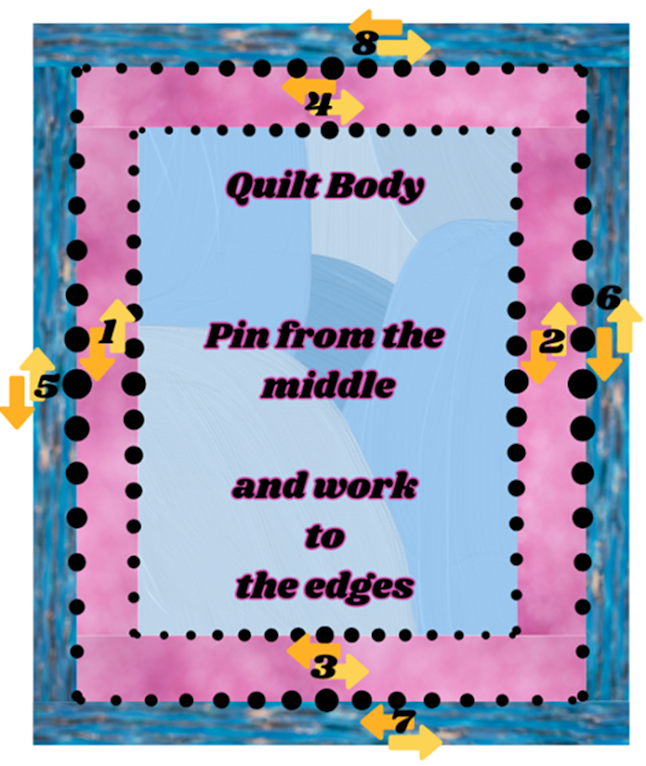Straight, Strong, and Beautiful:
A Guide to Quilt
Borders
Quilt Border Instructions
A border doesn’t just “frame” your quilt — it also helps
bring your quilt back into alignment (or “plumb”).
This is especially important with vintage quilt tops or
quilts with outer edges made of half-square or
half-diamond triangles. A well-placed border keeps the sides
straight and prevents frilled edges.
1. Deciding on Borders
• Add one, two, or several borders — it’s your choice.
• A good starting point is one border about 5–6 inches wide.
• Busy quilt body? Try solid or small-print fabric.
• Choose a border that frames and complements — not one that
overpowers.
Tip: If unsure, audition your border. Lay your quilt top out
and place fabric strips along the edges to see
how they look. Trust your eye — this is your quilt, your
art!
2. Measuring and Cutting
• Measure the length of your quilt (top to bottom). Add a
few extra inches.
• Cut two side border strips (Strips #1 and #2).
• If fabric isn’t long enough, piece strips together with straight or mitered seams.


3. Attaching Borders
• Add in this order: Side – Side – Bottom – Top.
• Find the center of your border strip.
• Pin the center of the strip to the quilt edge.
• Pin from center outward toward each edge.
• Stitch in place and repeat for all sides.
4. Choosing Multiple Borders
• First border: lighter fabric.
• Second border: darker fabric.
• Third border (optional): lighter fabric again.
• Audition fabrics side by side before sewing.
5. The Purpose of Borders
• Frame the quilt body.
• Bring the quilt top back into alignment (“plumb”).
• Complement (not overpower) the quilt design.
■ Every
quilt deserves to be finished beautifully. Adding a well-chosen border will
give your work the
frame it deserves — so you can proudly say:
Quilt it Done with Debbie!




Comments